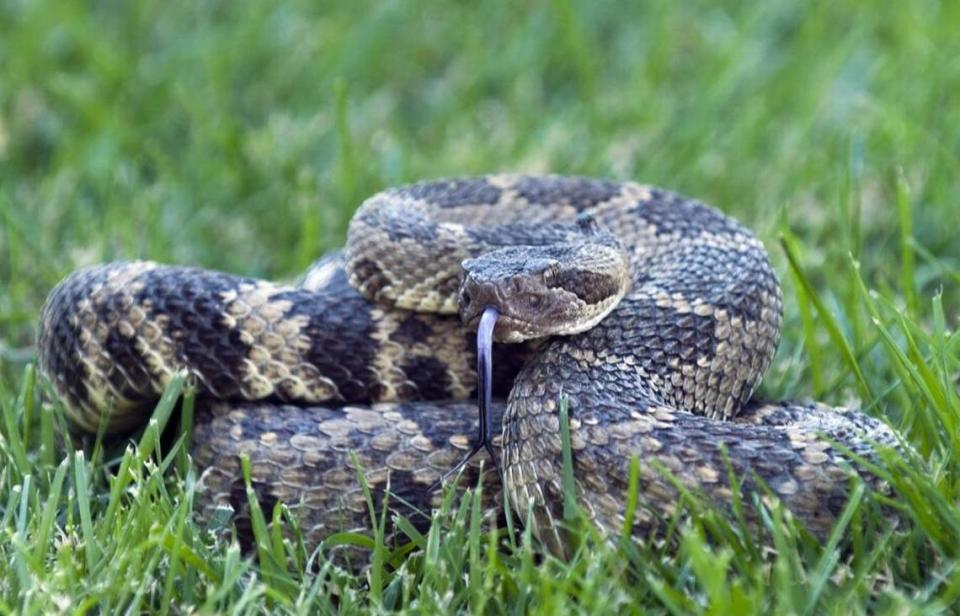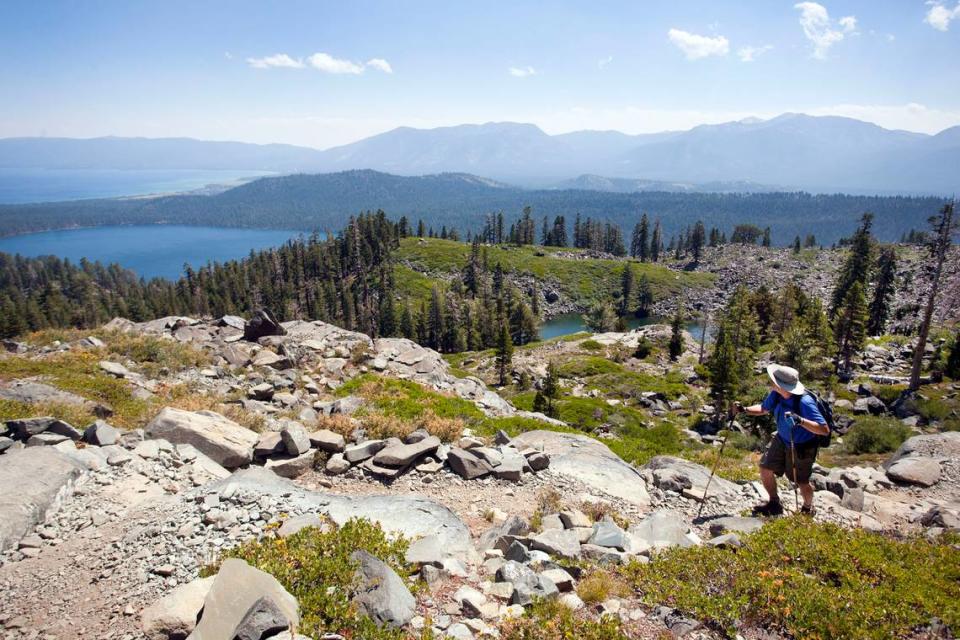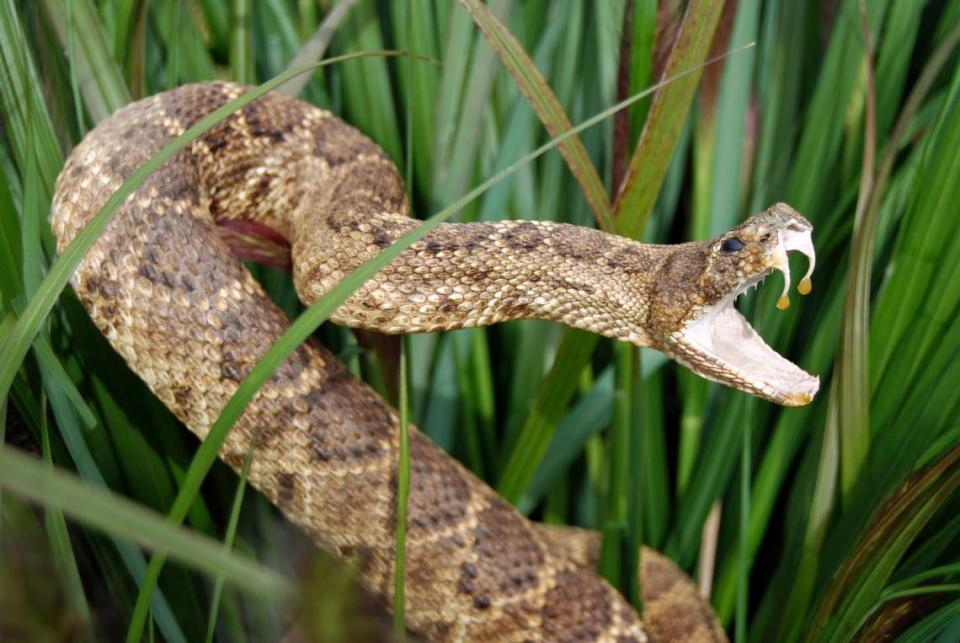What to do if a rattlesnake bites you and you don’t have cell service on a California hike
California has an abundance of hiking trails and campgrounds to explore.
Before heading into the wilderness, especially areas with no cell service, it’s important to prepare.
Dick Estel, a Sacramento Bee reader, submitted the following question after reading The Bee’s guide to what to do if you get bitten by a rattlesnake: What do we do when hiking in the Sierra, miles from any cell service?
Here are tips for how to get ready for spending time outdoors, how to avoid snakes and what to do if the worst happens:

How to avoid a rattlesnake bite
Roughly 1,000 people get bitten by rattlesnakes each year in the United States
To prevent a rattlesnake bite from happening when you’re out on a hike, below are some tips to consider from the U.S. Forest Service:
Prepare for your hike
Wear over-the ankle boots, thick socks and loose-fitting long pants.
Don’t go barefoot or wear sandals
While on your trip
Stick to well used trails when exploring
Avoid walking through tall grass and weeds
Watch where you step
Avoid wandering in the dark
When going over fallen trees or large rocks, inspect the surrounding areas to make sure there are no snakes
Be cautious when climbing rocks or gathering firewood
Shake out sleeping bags before using them and inspect logs before sitting down
Other tips
Avoid grabbing sticks and branches while swimming in lakes and rivers, snakes can swim and can sometimes pass for sticks
Avoid approaching any snake. Even a freshly killed snake can still inject venom

How to prepare for your California hike
It’s easy to get lost or get hurt in an area without cell service. So it’s important to prepare ahead of time and stay vigilant on designated trails, according to California State Parks.
“I just can’t overemphasize preparation enough,” said Scott Elliott, California State Parks’ Sierra District superintendent.
Elliott suggests packing things such as an emergency blanket, which is lightweight and reduces heat loss.
It can serve as both “something to keep you warm if you’re trapped out on a trail after you’ve been hurt, or also something you can use to signal a helicopter,” Elliott said.
Below are some tips from the National Park Service for how to prevent getting lost:
Review your route before you get on the trail
Pack a compass or handheld GPS
Be aware of trail junctions
Watch out for information signs
Keep an eye out for landmarks throughout the trail
Call 911 if you have an emergency such as a rattlesnake bite. And remember, you don’t need a cell phone provider in order to use emergency services.

What to do if you don’t have cell signal
If you find yourself in a remote area with no cell service, the best thing to do is to stay calm, Elliott said.
Below are some tips to find help if you’re in this situation:
Calling for help
Many satellite emergency communicators can send text messages and also have an SOS feature that can send coordinates. They are becoming more common among backpackers and and parkgoers, Elliott said.
Some iPhone users, can make an SOS call through the lock screen. The call will automatically call a local emergency number and share your location information, according to Apple. One thing to consider, iPhone 14 phone models and those after, can use the emergency SOS feature with only satellite and not cellular data or WiFi coverage.
Self rescue
If you’re injured, a good plan is to stay put and get shelter, and try to get someone’s attention, Elliott said.
Below are some general tips on finding help if you’re lost:
Try getting back to a cell service area to call for help. If you feel lost, use a handheld GPS, compass or map to help get you back, according to the National Park Service.
If you’re lost and have no way to get help, you can follow a drainage or stream downhill as a last resort, according to the Forest Service.
If you were to be bitten by a rattlesnake, “you don’t want to go running down to get cell service because now you’ve just moved the the venom closer to your heart,” Elliott said.
In this scenario, you should ask your hiking partner out to get cell service or find physical help.
What should I do if I get bitten by a rattlesnake?
If you’re bitten by a snake, and can’t get to the hospital right away, here’s what to do:
Stay calm to slow the spread of the venom
Gently wash the area with soap and water
Apply a cold, wet cloth over bite
Remove any watches or rings that may constrict swelling
Immobilize the affected area
Try to remember the color and shape of the snake for later treatment. Photograph it if possible.
Lay or sit down with the bite below the level of your heart.
Here’s what not to do, according to the U.S. Centers for Disease Control and Prevention:
Do not pick up the snake or try to trap it
Do not apply a tourniquet (material used to prevent blood flow)
Do not slash the wound with a knife
Do not suck out the venom
Do not apply ice or soak the wound in water
Do not drink alcohol
Do not drink caffeine
What do you want to know about life in Sacramento? Ask our service journalism team your top-of-mind questions in the module below or email servicejournalists@sacbee.com.


